Born in Sunderland, Mike Thorne began learning to play piano at the age of 11.
The lessons sparked a passion for music that led to him buying a tape recorder so that he could record songs off the radio. He then studied composition at The Guildhall School of Music & Drama. But despite later graduating with a physics degree from Oxford University, the music industry was where he wanted to be. His first jobs included tape op, journalist and then A&R at EMI looking after THE SEX PISTOLS during their short tenure at the label in 1976.
This led to becoming a house record producer at EMI and his first assignment involved recording 120 saxophones playing ‘The White Cliffs Of Dover’. After recording several live albums including ‘Live at The Roxy’, Thorne got his break producing French rock band TÉLÉPHONE whose eponymous debut album went gold.
New Yorkers THE SHIRTS and the Peter Godwin fronted METRO were among those followed, but it was his work on the first three albums by WIRE – a band he spotted and signed to PINK FLOYD’s label Harvest – that drew the most critical acclaim. The records demonstrated Thorne’s willingness to experiment in the studio, stripping down structures while adding electronic elements where appropriate.
Recognising that electronics and computers were the future of pop music and that a reinvention was likely by responding to new possibilities, Thorne had the foresight to purchase the first version of the NED Synclavier in 1979. A polyphonic digital sampling system and music workstation which used FM synthesis, it was to become his production mainstay and arrived in time for Colin Newman of WIRE’s first solo release and Scottish new wave quartet BERLIN BLONDES’ only long player.
Thorne moved to New York to become a freelance producer, working mostly at Media Sound Studio. But it was while in London working on the soundtrack to a Julie Christie film ‘Memoirs Of A Survivor’ that Thorne was commissioned by Phonogram Records to produce their new signing B-MOVIE. The deal had been brokered by Some Bizzare, an umbrella organisation that was more stable than label and part of the 2-for-1 arrangement was for him to work with a Northern synth duo called SOFT CELL. The rest, as they say, is history…
‘Tainted Love’, a cover of a song written by Ed Cobb and recorded by Gloria Jones, went to No1 and was the biggest selling UK single of 1981. It also spent a staggering 43 weeks on the US Billboard Hot 100. During the recording of ‘Tainted Love’, Thorne conceived a new way of producing an extended dance mix… the 12” single would be arranged and recorded first, with the 7” single version edited from sections of the longer track. Phonogram boss Roger Ames felt the track was a little slow so it was varispeeded up slightly for release!
Meanwhile, SOFT CELL were to enter an imperial phase of five successive Top4 UK hit singles with Thorne at the production helm including ‘Bedsitter’, ‘Say Hello Wave Goodbye’, ‘Torch’ and ‘What’. However, with the overwhelming success of their debut long player ‘Non Stop Erotic Cabaret’, tensions brewed during the recording of SOFT CELL’s appropriately titled second album ‘The Art Of Falling Apart’ leading to Thorne parting ways with the duo.
In 1984, Thorne was to produce one of the most important albums of his career when he was teamed up with BRONSKI BEAT for ‘The Age Of Consent’. The trio soon fragmented after its release, but Thorne followed their lead singer Jimmy Somerville to his new project THE COMMUNARDS with Richard Coles to achieve yet another No1 in a HI-NRG cover of ‘Don’t Leave Me This Way’; it was also the best-selling UK single of 1986.
Thorne’s ethos was always “to make music I liked with people I liked”. As well as working with more esoteric clients such as Marianne Faithful, Nina Hagen and Laurie Anderson, he was appreciated for his crossover potential in the mainstream with Daryl Hall & John Oates commissioning him to construct an Extended Club Mix of ‘Maneater’ in 1984 which included a breakdown clearly influenced by the middle section of the ‘Tainted Love’/ Where Did Our Love Go’ 12” segue.
Although Thorne ceased working as a hired hand from 1995, he continued as a producer for artists signed to his label imprint The Stereo Society while he issued his first his solo record ‘The Contessa’s Party’ in 2005 featuring special guests Kit Hain, Lene Lovich and Sarah Jane Morris.
Despite achieving two best-selling UK singles of the year, Mike Thorne has often slipped under the radar in discussions about notable record producers who led the start of the digital era. Documenting a significant and trailblazing career, here are 20 tracks selected by ELECTRICITYCLUB.CO.UK which act a Beginner’s Guide to Mike Thorne, listed in yearly and then alphabetical order by artist moniker with a restriction of one track per album project.
WIRE I Am The Fly (1978)
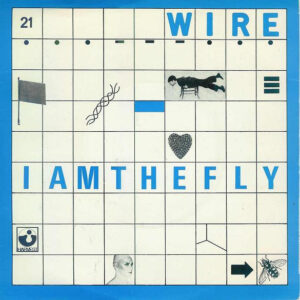 Although WIRE’s debut ‘Pink Flag’ was minimalist post-punk rock, their sophomore offering, ‘Chairs Missing,’ adopted more song structure, art rock approaches and synthesizer textures brought in by Thorne. One of WIRE’s signature tracks, ‘I Am The Fly’ had menace and provocation, prompting audiences at gigs to start lying down, waving their limbs in the air like dying flies! Musically, its influence can be heard from TUBEWAY ARMY’s ‘My Shadow In Vain’ to ELASTICA’s ‘Lined Up’.
Although WIRE’s debut ‘Pink Flag’ was minimalist post-punk rock, their sophomore offering, ‘Chairs Missing,’ adopted more song structure, art rock approaches and synthesizer textures brought in by Thorne. One of WIRE’s signature tracks, ‘I Am The Fly’ had menace and provocation, prompting audiences at gigs to start lying down, waving their limbs in the air like dying flies! Musically, its influence can be heard from TUBEWAY ARMY’s ‘My Shadow In Vain’ to ELASTICA’s ‘Lined Up’.
Available on the WIRE album ‘Chairs Missing’ via Pink Flag
BERLIN BLONDES Framework (1980)
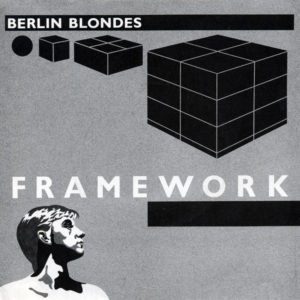 A meeting of synthesizers, art rock and obscure vocals, Glasgow’s BERLIN BLONDES exuded the detached European cool of David Bowie during his Mauerstadt exile and were unusual at the time for using a drum machine. The quartet only made one album produced by Thorne which was recorded at Gary Numan’s Rock City Studios, ‘Framework’ was syncopated futurist disco featuring crashing electronic beats and icy flashes of synth under the influence of SPARKS and MAGAZINE.
A meeting of synthesizers, art rock and obscure vocals, Glasgow’s BERLIN BLONDES exuded the detached European cool of David Bowie during his Mauerstadt exile and were unusual at the time for using a drum machine. The quartet only made one album produced by Thorne which was recorded at Gary Numan’s Rock City Studios, ‘Framework’ was syncopated futurist disco featuring crashing electronic beats and icy flashes of synth under the influence of SPARKS and MAGAZINE.
Available on the BERLIN BLONDES album ’The Complete Recordings 1980-81’ via Cherry Red Records
https://www.discogs.com/artist/512473-Berlin-Blondes
COLIN NEWMAN Order For Order (1980)
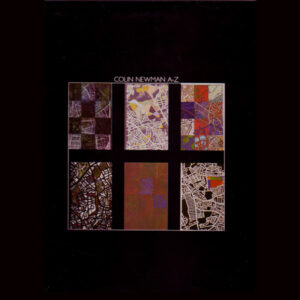 After three albums, WIRE split for the first time. Their lead vocalist Colin Newman released his first solo album, ‘A-Z’ in 1980, featuring songs created for the anticipated fourth WIRE album. It was produced by Thorne and could be considered a sonic companion to BERLIN BLONDES. ‘Order for Order’, explored the possibilities of new wave mainstream numbers and while some compared it to Gary Numan, it had more in common with MAGAZINE.
After three albums, WIRE split for the first time. Their lead vocalist Colin Newman released his first solo album, ‘A-Z’ in 1980, featuring songs created for the anticipated fourth WIRE album. It was produced by Thorne and could be considered a sonic companion to BERLIN BLONDES. ‘Order for Order’, explored the possibilities of new wave mainstream numbers and while some compared it to Gary Numan, it had more in common with MAGAZINE.
Available on the COLIN NEWMAN album ‘A–Z’ via Sentient Sonics
http://www.coldwarnightlife.com/features/shine-on-colin-newman/
B-MOVIE Remembrance Day (1981)
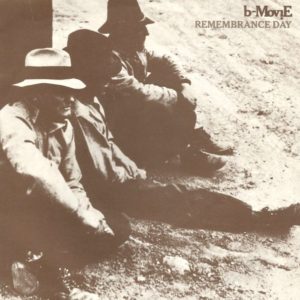 Despite being alongside DEPECHE MODE, SOFT CELL, BLANCMANGE and THE THE on the now iconic ‘Some Bizarre Album’, B-MOVIE were unable to secure a hit with the poignant magnificence of the Thorne produced ‘Remembrance Day’. The struggle for success and internal tensions led to the band fragmenting by 1983. But the song gained cult status and in 2004, American band THE FAINT presented a fine interpolation in ‘Southern Belles In London Sing’ .
Despite being alongside DEPECHE MODE, SOFT CELL, BLANCMANGE and THE THE on the now iconic ‘Some Bizarre Album’, B-MOVIE were unable to secure a hit with the poignant magnificence of the Thorne produced ‘Remembrance Day’. The struggle for success and internal tensions led to the band fragmenting by 1983. But the song gained cult status and in 2004, American band THE FAINT presented a fine interpolation in ‘Southern Belles In London Sing’ .
Available on the compilation album ‘Dawn Of Electronica’ (V/A) via Demon Music Group
KIT HAIN Spirits Walking Out (1981)
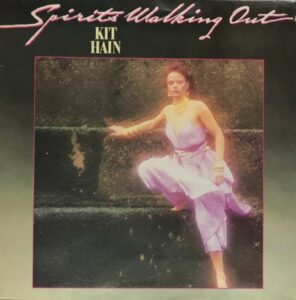 Kit Hain had an international hit ‘Dancing In The City’ with Julian Marshall in 1978 but after the duo split, Hain issued her debut solo album ‘Spirits Walking Out’ produced by Thorne. While ‘Danny’ was to be a minor single success, one of the album highlights was the synthesized cabaret noir of the dramatic title song. Hain was to have a role in the SOFT CELL story as it was her Roland CR78 Compurhythm which Thorne borrowed and used as the rhythmic backbone to ‘Tainted Love’.
Kit Hain had an international hit ‘Dancing In The City’ with Julian Marshall in 1978 but after the duo split, Hain issued her debut solo album ‘Spirits Walking Out’ produced by Thorne. While ‘Danny’ was to be a minor single success, one of the album highlights was the synthesized cabaret noir of the dramatic title song. Hain was to have a role in the SOFT CELL story as it was her Roland CR78 Compurhythm which Thorne borrowed and used as the rhythmic backbone to ‘Tainted Love’.
Available on the KIT HAIN album ‘Spirits Walking Out’ via Renaissance Records
SOFT CELL Bedsitter – Early Morning Dance Side (1981)
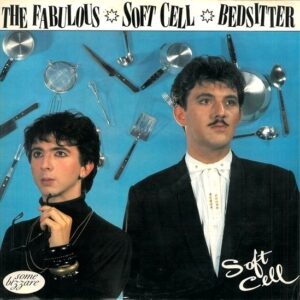 With direction from Thorne, SOFT CELL often incorporated extra vocal sections into their 12” extended formats as on ‘Torch’, ‘Facility Girls’ and ‘Insecure Me’. So instead of purely instrumental breakdown extensions, ‘Bedsitter’ added a marvellous rap from Marc Almond where he asked “do you look a mess, do have a hangover?” before taking a little blusher. The literal kitchen sink drama to song concept saw tea leaves pushed down the drain as the night life started all over again.
With direction from Thorne, SOFT CELL often incorporated extra vocal sections into their 12” extended formats as on ‘Torch’, ‘Facility Girls’ and ‘Insecure Me’. So instead of purely instrumental breakdown extensions, ‘Bedsitter’ added a marvellous rap from Marc Almond where he asked “do you look a mess, do have a hangover?” before taking a little blusher. The literal kitchen sink drama to song concept saw tea leaves pushed down the drain as the night life started all over again.
Available on the SOFT CELL album ‘The Twelve Inch Singles’ via UMC
NINA HAGEN Tiatschi Tarot (1982)
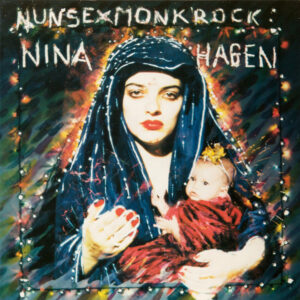 Record in New York with Thorne, ‘NunSexMonkRock’ was the debut solo adventure by eccentric German singer Nina Hagen, as well as her first record with all her songs performed in English after disbanding her band after two acclaimed albums. While it was primarily a dissonant mix of punk, funk and reggae, ‘Taitschi-Tarot’ was a delightful oddball avant opera piece using piano and synths that covered the topics of Buddhism, reincarnation and yoga.
Record in New York with Thorne, ‘NunSexMonkRock’ was the debut solo adventure by eccentric German singer Nina Hagen, as well as her first record with all her songs performed in English after disbanding her band after two acclaimed albums. While it was primarily a dissonant mix of punk, funk and reggae, ‘Taitschi-Tarot’ was a delightful oddball avant opera piece using piano and synths that covered the topics of Buddhism, reincarnation and yoga.
Available on the NINA HAGEN album ‘Nunsexmonkrock’ via Sony Music
https://ninahagendas.beepworld.de/
SOFT CELL Torch – 12” version (1982)
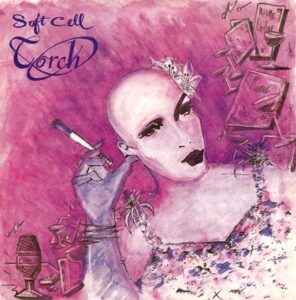 Thorne and Marc Almond agreed that ‘Torch’ was their finest moment of recording together. Punctuated by John Gatchell’s flugelhorn, ‘Torch’ came in the middle of SOFT CELL’s imperial pop phase and the 12” version was a pièce de résistance, fuelled by Almond and Dave Ball partying on the New York club scene where they met Cindy Ecstasy. In an amusing spoken middle section, her nonchalant off-key vocal counterpointed Almond’s fabulously forlorn romanticism.
Thorne and Marc Almond agreed that ‘Torch’ was their finest moment of recording together. Punctuated by John Gatchell’s flugelhorn, ‘Torch’ came in the middle of SOFT CELL’s imperial pop phase and the 12” version was a pièce de résistance, fuelled by Almond and Dave Ball partying on the New York club scene where they met Cindy Ecstasy. In an amusing spoken middle section, her nonchalant off-key vocal counterpointed Almond’s fabulously forlorn romanticism.
Available on the SOFT CELL boxed set ‘Keychains & Snowstorms’ via UMC
https://www.facebook.com/softcell
THE THE Uncertain Smile (1982)
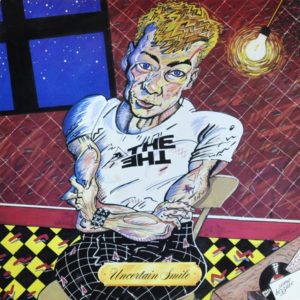 Still Matt Johnson’s finest five minutes as THE THE, ‘Uncertain Smile’ on its single release featured a wonderfully rigid TR808 pattern, lovely layers of synths and a variety of woodwinds including flute and sax. Produced by Mike Thorne, this fuller sounding and more emotive take far outstripped the bland and overly-long ‘Soul Mining’ album cut, which had been re-recorded by Thorne associate Paul Hardiman and included the extended boogie-woogie piano of Jools Holland…
Still Matt Johnson’s finest five minutes as THE THE, ‘Uncertain Smile’ on its single release featured a wonderfully rigid TR808 pattern, lovely layers of synths and a variety of woodwinds including flute and sax. Produced by Mike Thorne, this fuller sounding and more emotive take far outstripped the bland and overly-long ‘Soul Mining’ album cut, which had been re-recorded by Thorne associate Paul Hardiman and included the extended boogie-woogie piano of Jools Holland…
Available on the THE THE album ’45 RPM – The Singles’ via Epic Records
SEONA DANCING More To Lose (1983)
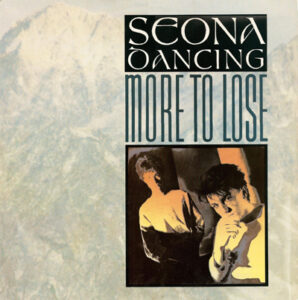 SEONA DANCING were the synthpop duo comprising of a young Ricky Gervais and his friend Bill McRae formed while they were students at University College London. With Gervais adopting a melodramatic Bowie-like persona as a doomed romantic, their first single ‘More To Lose’ produced by Mike Thorne was of its time. However, its incessant rhythms and tuneful keyboard inflections had appeal and the song became a surprise radio hit in The Philippines.
SEONA DANCING were the synthpop duo comprising of a young Ricky Gervais and his friend Bill McRae formed while they were students at University College London. With Gervais adopting a melodramatic Bowie-like persona as a doomed romantic, their first single ‘More To Lose’ produced by Mike Thorne was of its time. However, its incessant rhythms and tuneful keyboard inflections had appeal and the song became a surprise radio hit in The Philippines.
Available on the SEONA DANCING single ‘More To Lose’ via London Records
SOFT CELL The Art Of Falling Apart (1983)
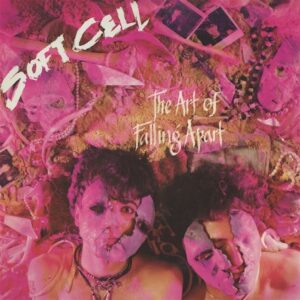 Whereas Mike Thorne had been a happy collaborator on their debut album ‘Non Stop Erotic Cabaret’, during the making of the follow-up, he was viewed as a controller and spy for Phonogram. As former art school students, pop stardom did not suit SOFT CELL so there was no option but for Marc Almond and Dave Ball to self-destruct. The imploding disposition of ‘The Art Of Falling Apart’ title song couldn’t have soundtracked a mental breakdown any better.
Whereas Mike Thorne had been a happy collaborator on their debut album ‘Non Stop Erotic Cabaret’, during the making of the follow-up, he was viewed as a controller and spy for Phonogram. As former art school students, pop stardom did not suit SOFT CELL so there was no option but for Marc Almond and Dave Ball to self-destruct. The imploding disposition of ‘The Art Of Falling Apart’ title song couldn’t have soundtracked a mental breakdown any better.
Available on the album ‘The Art Of Falling Apart’ via Mercury Records
https://www.instagram.com/softcellhq/
BRONSKI BEAT Smalltown Boy (1984)
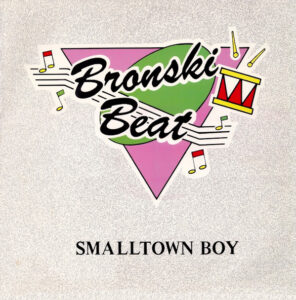 When BRONSKI BEAT made their first ever TV appearance performing on BBC2’s ‘ORS’, they were nothing short of startling, thanks to their look, their minimal synth sound and Somerville’s lonely earth shattering falsetto. The trio had sought to be more outspoken and political in their position as openly gay performers and the tale of the Mike Thorne produced ‘Smalltown Boy’ about a gay teenager fleeing his hometown made an important statement.
When BRONSKI BEAT made their first ever TV appearance performing on BBC2’s ‘ORS’, they were nothing short of startling, thanks to their look, their minimal synth sound and Somerville’s lonely earth shattering falsetto. The trio had sought to be more outspoken and political in their position as openly gay performers and the tale of the Mike Thorne produced ‘Smalltown Boy’ about a gay teenager fleeing his hometown made an important statement.
Available on the BRONSKI BEAT album ‘The Age Of Consent’ via London Records
https://www.jimmysomerville.co.uk/
THE COMMUNARDS Disenchanted (1986)
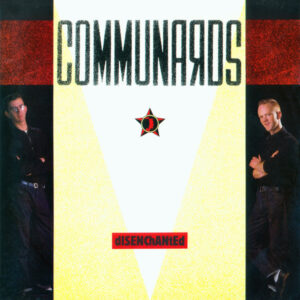 After leaving BRONSKI BEAT, Jimmy Somerville formed THE COMMUNARDS with future TV vicar Richard Coles and took Thorne with him to produce their self-titled debut. While more organic elements such as piano, brass and strings featured, there remained a HI-NRG electronic element. The brilliant ‘Disenchanted’ heavily recalled the sound of his previous band. Somerville never stuck around for long and his relationship with Coles was dissolved in 1987.
After leaving BRONSKI BEAT, Jimmy Somerville formed THE COMMUNARDS with future TV vicar Richard Coles and took Thorne with him to produce their self-titled debut. While more organic elements such as piano, brass and strings featured, there remained a HI-NRG electronic element. The brilliant ‘Disenchanted’ heavily recalled the sound of his previous band. Somerville never stuck around for long and his relationship with Coles was dissolved in 1987.
Available on THE COMMUNARDS album ‘Communards’ via London Records
https://www.facebook.com/officialjimmysomerville
HOLLYWOOD BEYOND Save Me (1987)
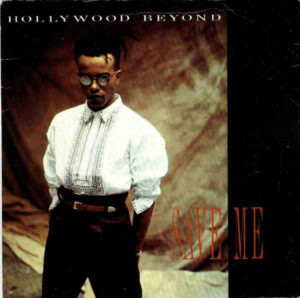 HOLLYWOOD BEYOND was the vehicle of flamboyant singer-songwriter Mark Rogers and he went Top10 with the Stephen Hague produced ‘What’s The Colour Of Money?’ in 1986. Mike Thorne was brought in to produce one track, ‘Save Me’, for the parent album ‘If’. Released as a single, it was an attempt to make a funkier version of BRONSKI BEAT and THE COMMUNARDS but Rogers lacked the vocal richness of Jimmy Somerville to pull it off.
HOLLYWOOD BEYOND was the vehicle of flamboyant singer-songwriter Mark Rogers and he went Top10 with the Stephen Hague produced ‘What’s The Colour Of Money?’ in 1986. Mike Thorne was brought in to produce one track, ‘Save Me’, for the parent album ‘If’. Released as a single, it was an attempt to make a funkier version of BRONSKI BEAT and THE COMMUNARDS but Rogers lacked the vocal richness of Jimmy Somerville to pull it off.
Available on the HOLLYWOOD BEYOND album ‘If’ via Warner Music
https://www.discogs.com/artist/134514-Hollywood-Beyond
LAURIE ANDERSON The Day The Devil (1989)
 Laurie Anderson’s fourth studio album ‘Strange Angels’ saw her attempt to move away from performance art into a more musical territory. Taking singing lessons and developing into a soprano, there was less of the spoken word that characterised her surprise No2 UK hit ‘O Superman’ and its parent album ‘Big Science’. Thorne produced four tracks on the album including ‘The Day the Devil’, a gothic art mini-opera with sinister diabolic overtones.
Laurie Anderson’s fourth studio album ‘Strange Angels’ saw her attempt to move away from performance art into a more musical territory. Taking singing lessons and developing into a soprano, there was less of the spoken word that characterised her surprise No2 UK hit ‘O Superman’ and its parent album ‘Big Science’. Thorne produced four tracks on the album including ‘The Day the Devil’, a gothic art mini-opera with sinister diabolic overtones.
Available on the LAURIE ANDERSON album ‘Strange Angels’ via Warner Music
CHINA CRISIS Red Letter Day (1989)
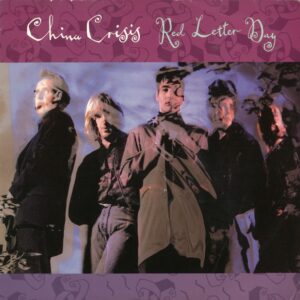 While CHINA CRISIS had recorded their fifth album ‘Diary Of A Hollow Horse’ with STEELY DAN’s Walter Becker, Virgin Records had felt there were no potential hit singles. So the band were despatched to re-record three songs including ‘Red Letter Day’. Using a sharp piano figure reminiscent of Rupert Holmes’ one hit wonder ‘Escape (The Pina Colada Song)’ with more counterpoints, synths and vocal harmonies, the track was issued as the album’s second single but no hit was forthcoming.
While CHINA CRISIS had recorded their fifth album ‘Diary Of A Hollow Horse’ with STEELY DAN’s Walter Becker, Virgin Records had felt there were no potential hit singles. So the band were despatched to re-record three songs including ‘Red Letter Day’. Using a sharp piano figure reminiscent of Rupert Holmes’ one hit wonder ‘Escape (The Pina Colada Song)’ with more counterpoints, synths and vocal harmonies, the track was issued as the album’s second single but no hit was forthcoming.
Available on the CHINA CRISIS album ‘Diary Of A Hollow Horse’ via Virgin Records
https://www.facebook.com/chinacrisisofficial
BRONSKI BEAT I’m Gonna Run Away From You (1990)
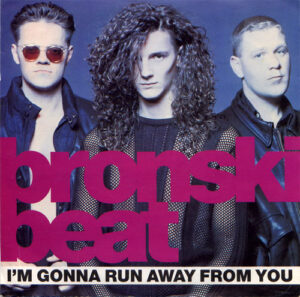 Mike Thorne reunited with Steve Bronski and Larry Steinbachek when BRONSKI BEAT were rebooted in a new deal with Zomba Records subsidiary Zed Beat featuring a new vocalist Jonathan Hellyer who possessed a falsetto similar to Jimmy Somerville. The first track released was a frantic dance cover of ‘I’m Gonna Run Away From You’, a Northern Soul song made famous by Tami Lynn. Sadly, Larry Steinbachek passed away in 2017 and Steve Bronski in 2022.
Mike Thorne reunited with Steve Bronski and Larry Steinbachek when BRONSKI BEAT were rebooted in a new deal with Zomba Records subsidiary Zed Beat featuring a new vocalist Jonathan Hellyer who possessed a falsetto similar to Jimmy Somerville. The first track released was a frantic dance cover of ‘I’m Gonna Run Away From You’, a Northern Soul song made famous by Tami Lynn. Sadly, Larry Steinbachek passed away in 2017 and Steve Bronski in 2022.
Originally released as a single by Zed Beat, currently unavailable.
INFORMATION SOCIETY Peace & Love, Inc (1992)
 From Minneapolis, INFORMATION SOCIETY had their breakthrough ‘What’s On Your Mind (Pure Energy)’ in 1988. From the album of the same name on which Thorne produced 4 tracks, ‘Peace & Love, Inc’ was spikey and energetic social commentary with heavy rave influences with 808 STATE samples thrown in. Incidentally another album track ‘To Be Free’ was produced by Karl Bartos under his post-KRAFTWERK guise as ELEKTRIC MUSIC.
From Minneapolis, INFORMATION SOCIETY had their breakthrough ‘What’s On Your Mind (Pure Energy)’ in 1988. From the album of the same name on which Thorne produced 4 tracks, ‘Peace & Love, Inc’ was spikey and energetic social commentary with heavy rave influences with 808 STATE samples thrown in. Incidentally another album track ‘To Be Free’ was produced by Karl Bartos under his post-KRAFTWERK guise as ELEKTRIC MUSIC.
Available on the INFORMATION SOCIETY album ‘Peace & Love, Inc’ via Tommy Boy Records
https://www.facebook.com/informationsociety
PETER MURPHY Our Secret Garden (1992)
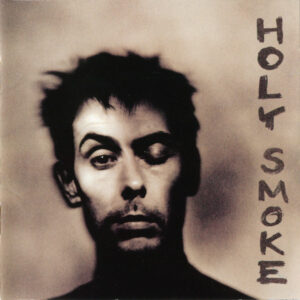 BAUHAUS front man Peter Murphy sought to capture the live feel of a band, having sampled musicians on his two previous works. But recording had not been straightforward and it was the longest time Thorne had worked on an album. the spacious and exotic ‘Our Secret Garden’ saw keyboards played by Murphy himself alongside the producer’s Synclavier. The ‘Holy Smoke’ album also reunited Thorne with B-MOVIE’s Paul Statham who was now acting as Murphy’s wingman.
BAUHAUS front man Peter Murphy sought to capture the live feel of a band, having sampled musicians on his two previous works. But recording had not been straightforward and it was the longest time Thorne had worked on an album. the spacious and exotic ‘Our Secret Garden’ saw keyboards played by Murphy himself alongside the producer’s Synclavier. The ‘Holy Smoke’ album also reunited Thorne with B-MOVIE’s Paul Statham who was now acting as Murphy’s wingman.
Available on the PETER MURPHY album ‘Holy Smoke’ via Beggars Banquet Records
MARC ALMOND We Need Jealousy (1996)
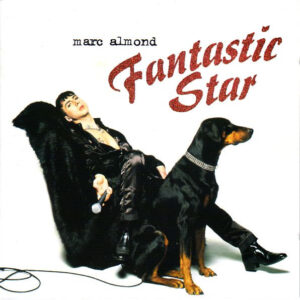 During Thorne’s reunion with Marc Almond in 1993, the singer was dismayed that the producer was still using his Synclavier. A change in record labels led to Thorne’s productions being remixed by THE BEATMASTERS and BIZARRE INC. Mixed by Gregg Jackman, ‘We Need Jealousy’ featured some great bassline programming augmented by ‘Motorbiking’ guitar by Chris Spedding. The experience drained Thorne, who withdrew from working as a hired hand.
During Thorne’s reunion with Marc Almond in 1993, the singer was dismayed that the producer was still using his Synclavier. A change in record labels led to Thorne’s productions being remixed by THE BEATMASTERS and BIZARRE INC. Mixed by Gregg Jackman, ‘We Need Jealousy’ featured some great bassline programming augmented by ‘Motorbiking’ guitar by Chris Spedding. The experience drained Thorne, who withdrew from working as a hired hand.
Available on the MARC ALMOND album ‘Fantastic Star’ via Mercury Records
For personal commentary by Mike Thorne, archive articles and information on releases by The Stereo Society, please visit https://stereosociety.com/
Text by Chi Ming Lai with thanks to Simon Helm
20th February 2023


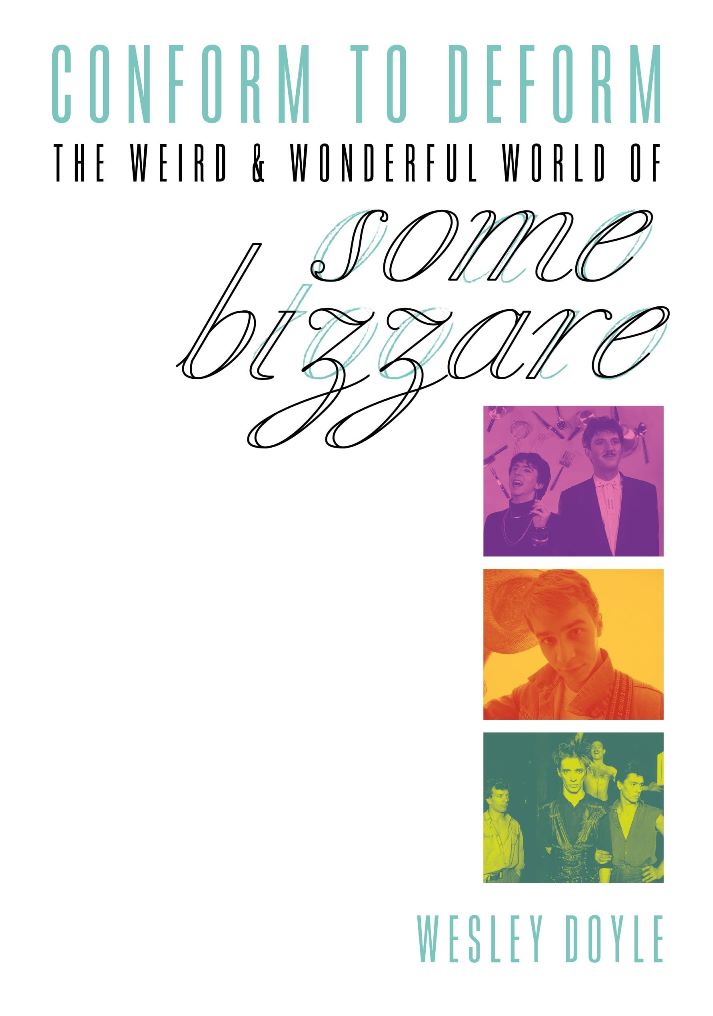
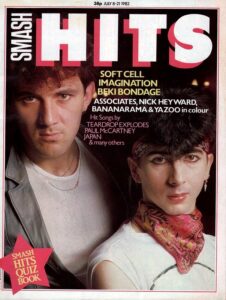
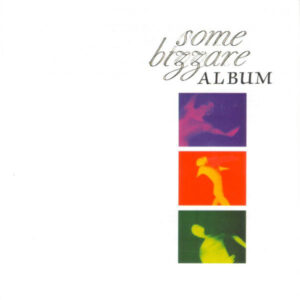
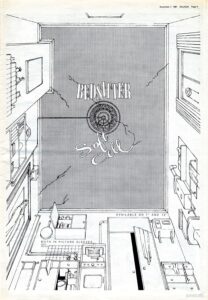
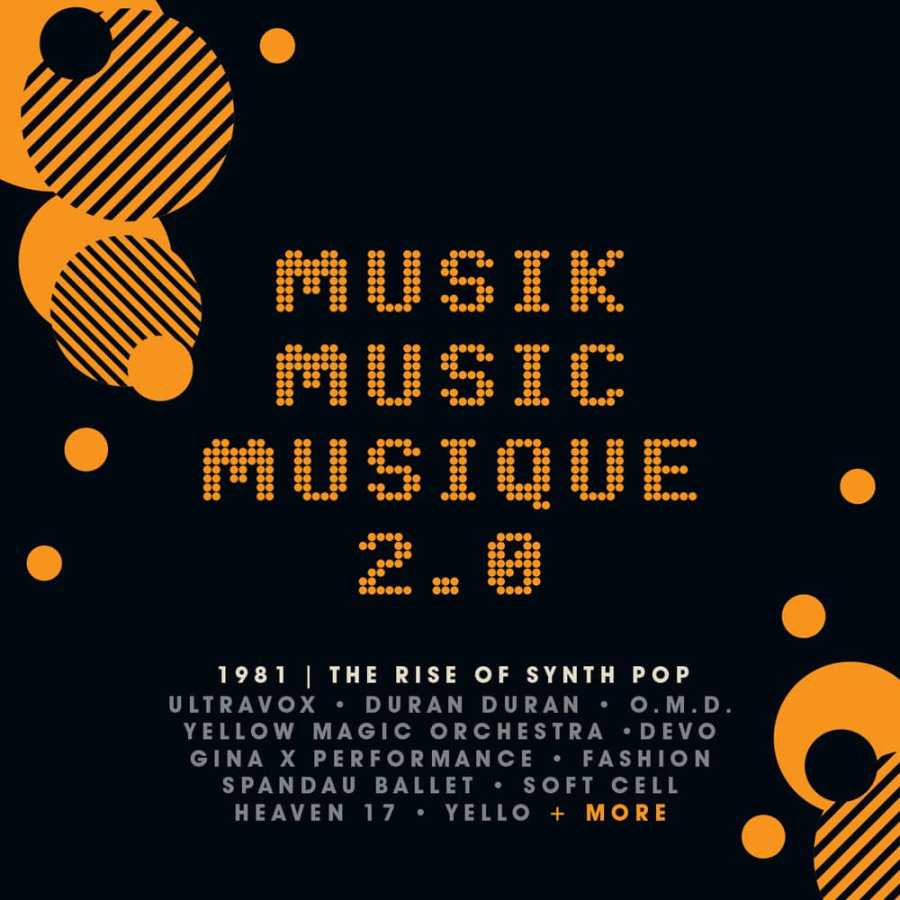
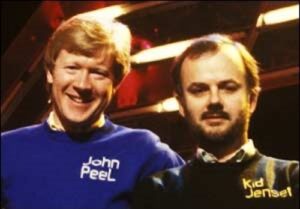
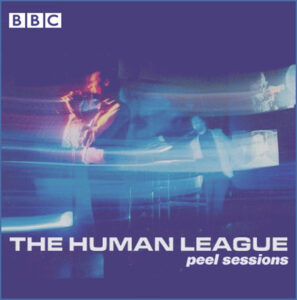
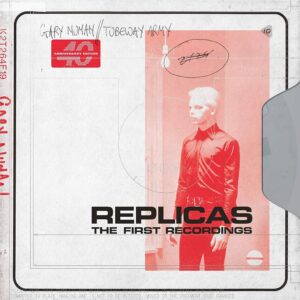
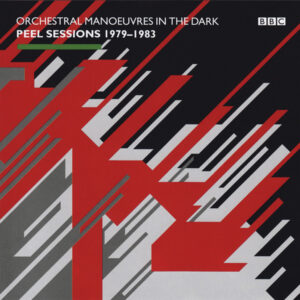
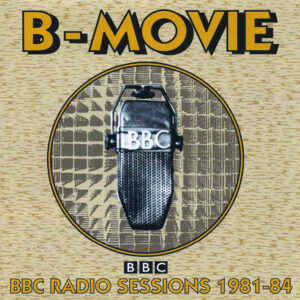
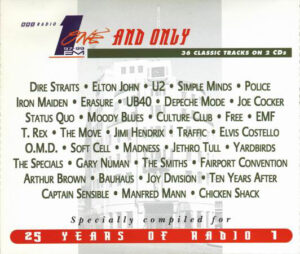

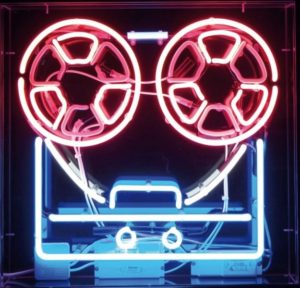
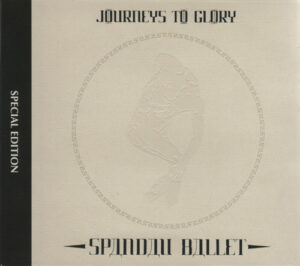
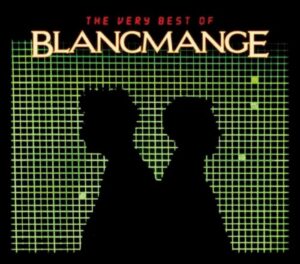
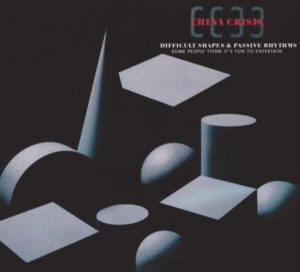
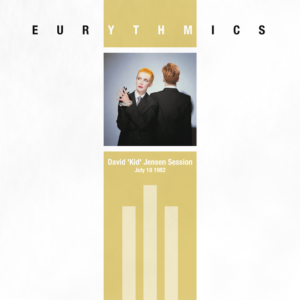
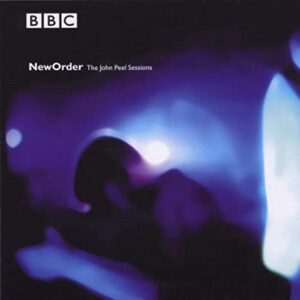
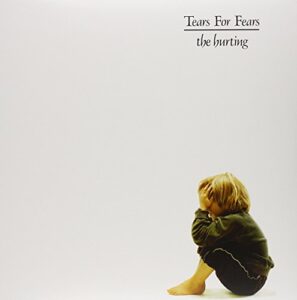

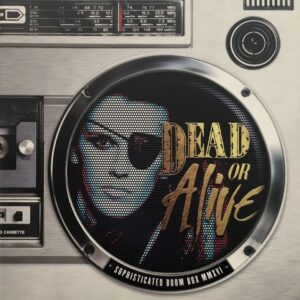
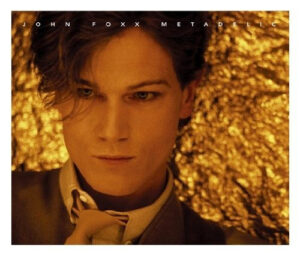
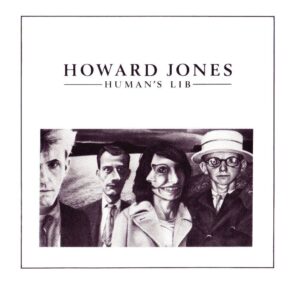
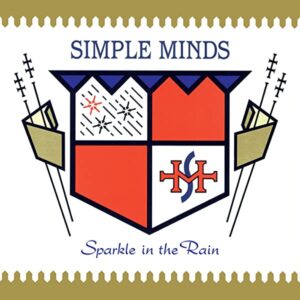
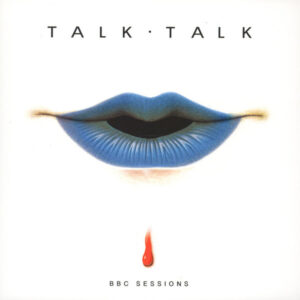
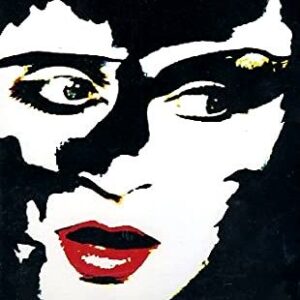

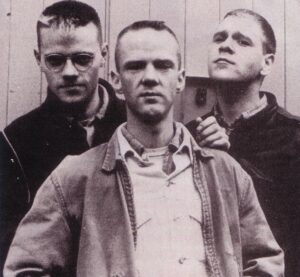
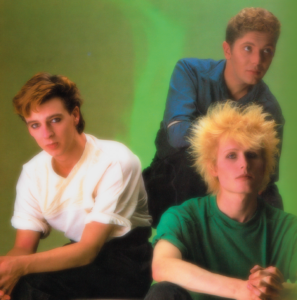
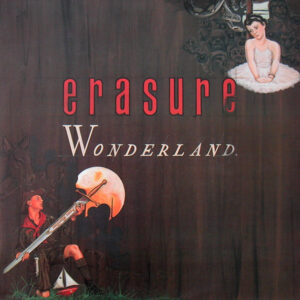

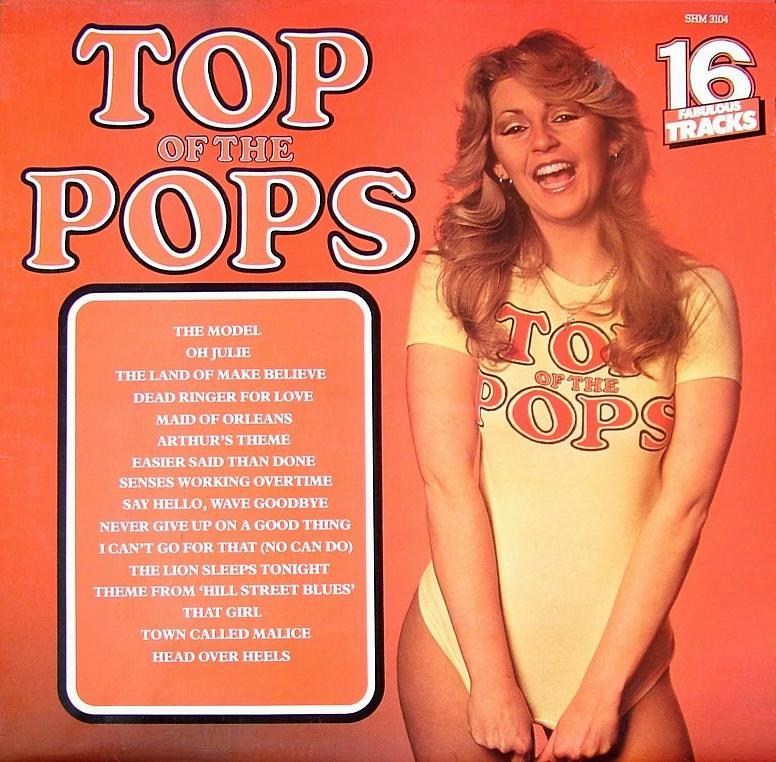
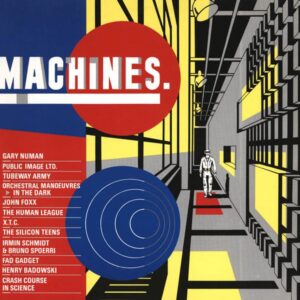
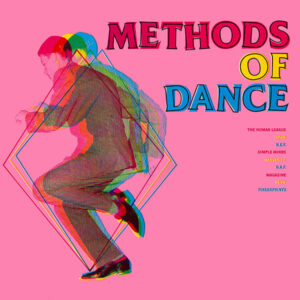
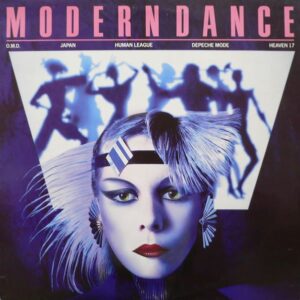
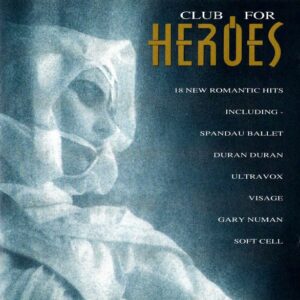
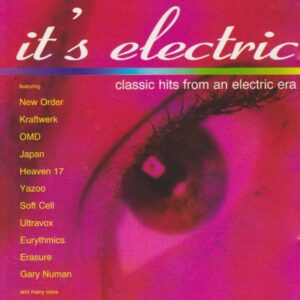
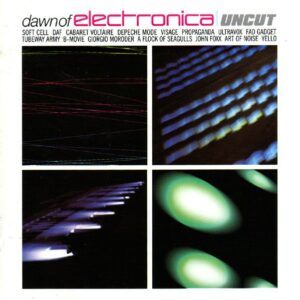
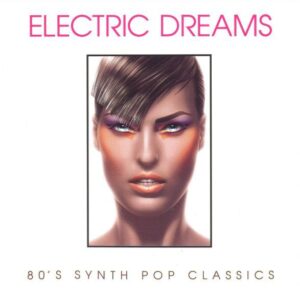
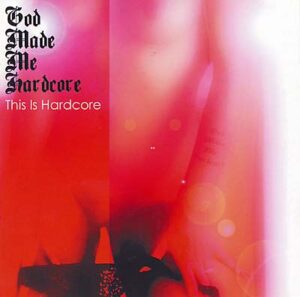
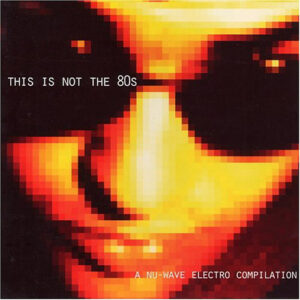

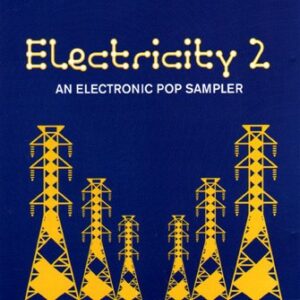
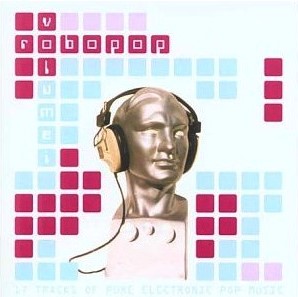
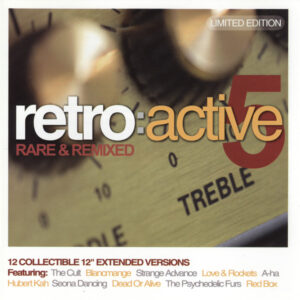
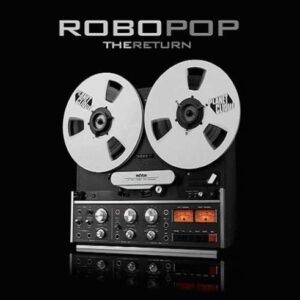
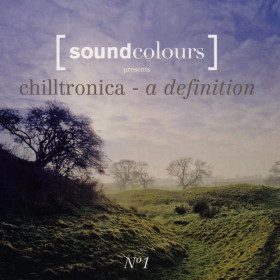

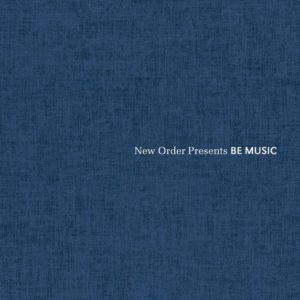
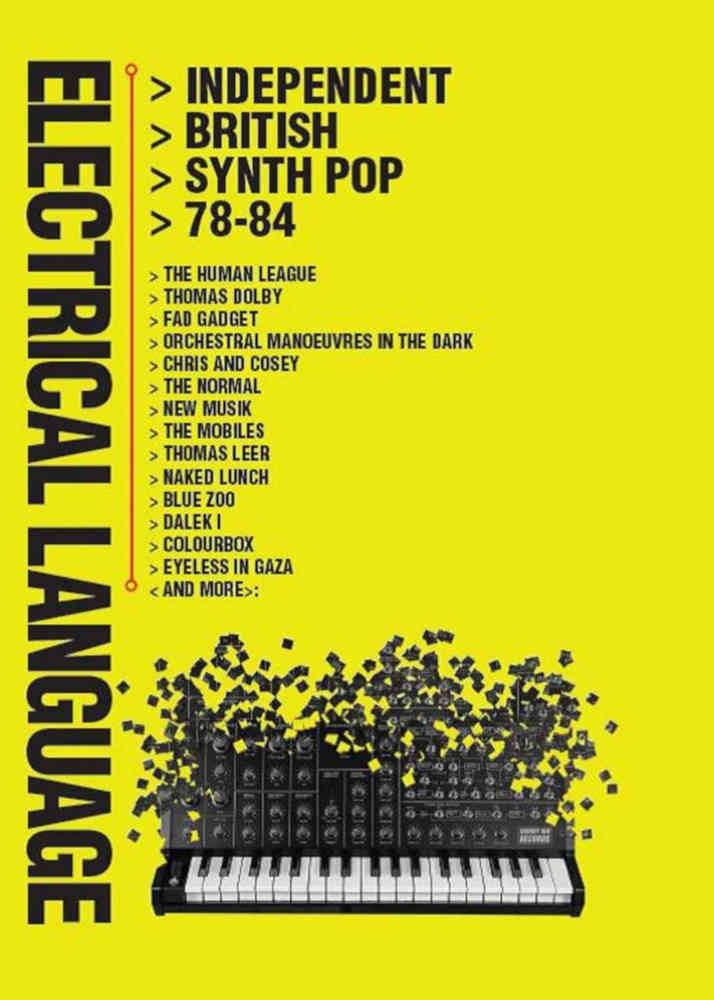
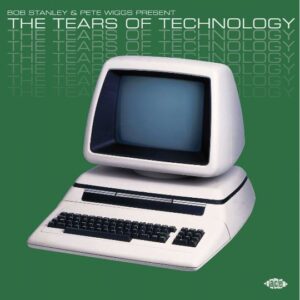
Follow Us!